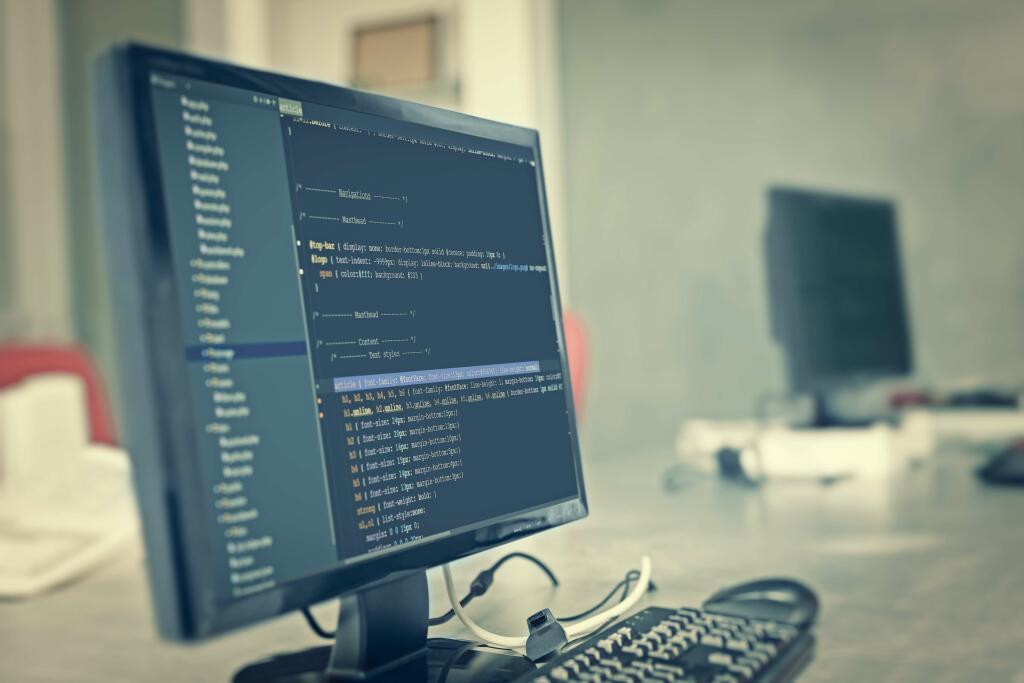Ai In Manufacturing: Use Instances And Examples
AI algorithms enable producers to optimize production planning, stock control, and distribution strategies, leading to lowered costs, improved customer satisfaction, and environment friendly resource utilization. Connected factories are prime examples of how synthetic intelligence can be incorporated into production processes to build clever, networked ecosystems. Leveraging artificial intelligence in manufacturing helps consider real-time data from equipment, anticipate maintenance requirements, streamline operations, and scale back downtime utilizing IoT sensors. Performance optimization is a critical aspect of manufacturing, and artificial intelligence is a sport changer in the same. AI algorithms can identify patterns, detect anomalies, and make data-driven predictions by analyzing historical knowledge, real-time sensor information, and different relevant variables. This allows manufacturers to optimize operations, decrease downtime, and maximize general tools effectiveness.
By minimizing or automating repetitive tasks, AI solutions enable employees to focus on high-value actions as an alternative. This means folks spend less time and sources on low-value tasks https://www.globalcloudteam.com/, rising general velocity and productiveness. Artificial intelligence empowers manufacturers to attain unprecedented ranges of efficiency, productivity, and customization.
What Are The Use Instances Of Ai For Manufacturing?
Additionally, natural language processing aids in supplier communication and even extracting info from digital paperwork. Using synthetic intelligence so as administration entails optimizing and streamlining the complete order success course of. AI examines previous data, client preferences, and market developments using machine learning algorithms to estimate demand exactly. This makes it potential to course of orders automatically, optimize inventories, and make dynamic pricing adjustments.
According to Accenture, the manufacturing industry stands to realize $3.seventy eight trillion from AI by 2035. Let’s collaborate to unlock unprecedented prospects and cleared the path right into a future where manufacturing is aware of no bounds. Even although an optical scan can find many problems on silicon wafers, it takes a very lengthy time to examine them with an electron microscope. This is necessary because some small errors can make the chips not work properly. Suntory PepsiCo, an organization that makes drinks, has five factories in Vietnam.
The agency makes use of its Predix platform to integrate synthetic intelligence with the Internet of Things (IoT) in their manufacturing. This networked system facilitates efficient machine-to-machine communication, permitting for fast modifications to production schedules in response to changes in demand. By implementing conversational AI in manufacturing, corporations can automate these paperwork processes. Intelligent bots equipped with AI capabilities can mechanically extract knowledge from documents, classify and categorize data, and enter it into applicable techniques. This collaborative strategy is a superb instance of how cobots and AI work together to create a more productive and agile production surroundings where human-machine coordination is vital to operational excellence. Overall, AI changes the manufacturing environment by fostering innovation, cutting expenses, and bettering total operational performance.

There are many purposes for AI in manufacturing as industrial IoT and smart factories generate giant quantities of knowledge every day. AI in manufacturing is using machine studying (ML) options and deep learning neural networks to optimize manufacturing processes with improved information analysis and decision-making. By applying AI to manufacturing knowledge, firms can better predict and prevent machine failure. AI in manufacturing has many different potential makes use of and benefits, similar to improved demand forecasting and lowered waste of raw materials. AI and manufacturing have a pure relationship since industrial manufacturing settings already require folks and machines to work closely together.
Related Options And Resources
Artificial intelligence streamlines the order administration process through automation, stock monitoring, and demand forecasting. Machine learning algorithms analyze historical information to predict demand and optimize stock levels accordingly, which helps producers avoid excess or inadequate stock. AI helps optimize provide chain management by analyzing data from various sources, including gross sales, stock levels, and market demand.
Electronics producer Philips also operates a manufacturing facility within the Netherlands that makes electrical razors, the place a total of nine human members of workers are required on website at any time. This is a trend that we will anticipate to see different companies working in direction of adopting as time goes by as know-how turns into increasingly efficient and inexpensive. Using a robots-only workforce means a manufacturing unit can doubtlessly operate 24/7 without having for human intervention, potentially leading to massive benefits in terms of output and efficiency. Of course, questions will must be addressed about what the impression eradicating people from the manufacturing workforce will have on wider society. Design engineers in the manufacturing industry can use this methodology to create a big selection of design choices for model spanking new merchandise they want to create and then pick and select the most effective ones to place into production.

Manufacturers at present have a chance to fully automate their high quality control course of. As a outcome, they minimize the danger of defective products entering the market and prevent the drop in quality within the first place. This ability also helps organizations streamline processes and reduce downtime in the lengthy term. This improvement in technology means that you could predict failures with extra certainty, preventing manufacturing stops, which can value you cash and clients. In addition, manufacturers can use AI-based expertise to handle sustainability considerations, mitigate the risks of provide chain disruptions, and optimize resource use within the face of shortages.
How Artificial Intelligence Is Revolutionizing The Manufacturing Area – Use Cases And Examples
In manufacturing, course of optimization that maximizes high quality, effectivity, and cost-savings is an ever-present objective. AI and generative AI are ideally suited to optimize production processes and bridge the physical and digital worlds with real-time monitoring and management. That’s how automation by way of AI-powered methods helps producers identify areas of enchancment and proactively deliver process enhancements and higher enterprise outcomes. Volkswagen is a prominent instance of a business utilizing synthetic intelligence in the manufacturing industry to optimize assembly lines. They enhance the effectiveness and caliber of their manufacturing operations by using AI-driven options. Volkswagen analyzes sensor knowledge from the assembly line using machine learning algorithms to forecast maintenance requirements and streamline operations.
There is little question that in the coming years, we are going to see more and more organizations turning to AI-powered options to remain related and aggressive. Artificial intelligence has already proven its potential within the manufacturing sector, and it’s only a matter of time earlier than it becomes an essential tool for each manufacturer. AI and ML applied sciences analyze huge quantities of information from the market to foretell preferences that influence product designs. By quickly running 1000’s of simulations, AI options can remodel various phases of the manufacturing process, from ideating and prototyping to product testing. AI algorithms can analyze historic knowledge from a variety of sources to know where efficiencies occur and provide accurate forecasting on future deviations.
- If you are looking to put cash into AI manufacturers, you possibly can think about a variety of the shares above or take a look at different AI shares, machine learning shares, or AI ETFs.
- AI systems can also take into account knowledge from climate forecasts, as properly as different disruptions to usual shipping patterns to search out alternate route and make new plans that received’t disrupt regular enterprise operations.
- Our in-depth analysis of our shoppers and their business wants permits us to maximize their software program investments to the fullest.
Additive manufacturing, also called 3D printing, builds up merchandise layer by layer. In manufacturing, for example, satisfying customers necessitates assembly their needs in various ways, including prompt and precise supply. Manufacturers can hold a constant eye on their stockrooms and enhance their logistics due to the continuous stream of data they acquire.
Artificial intelligence will help manufacturing by higher understanding of demand for merchandise and supply of inputs, with lesser impacts on what occurs contained in the plant. Robot know-how continues to enhance, but not on the rapid tempo of the big language fashions (LLMs) that energy chatbots corresponding to ChatGPT. AI and generative AI convey unparalleled innovative potential to the manufacturing industry, promising to reinvent its future.
By using AI algorithms, manufacturers can routinely allocate sources, schedule tasks, and optimize processes primarily based on various factors corresponding to demand, availability, and efficiency metrics. This precision applies to everything from demand forecasting to efficiency loss. It permits ai in manufacturing industry manufacturers to optimize each link of the provision chain – making it extra resilient and customer-centric. AI in manufacturing refers to utilizing knowledge in combination with machine learning and deep learning algorithms to automate duties and make manufacturing operations quicker, better, and more exact.
The manufacturing unit’s mixture of AI and IIoT can considerably enhance precision and output. Organizations may attain sustainable production ranges by optimizing processes with using AI-powered software program. Industrial robots, usually often recognized as manufacturing robots, automate monotonous operations, get rid of or drastically decrease human error, and refocus human employees’ consideration on more profitable parts of the business. The upkeep of a desired diploma of quality in a service or product is called high quality assurance. Utilizing machine vision technology, AI systems can spot deviations from the norm as a outcome of the overwhelming majority of flaws are readily apparent. Some forecasts estimate that the chance in artificial intelligence will be worth trillions of dollars.
In manufacturing, this branch of know-how — focused on integrating physical and digital experiences — has brought forth innovations like augmented reality (AR) and digital reality (VR) options on the store flooring. VR headsets, sensible glasses, and digital twins will continue to assist manufacturers speed up coaching and product growth processes as they turn into standardized sooner or later. A. AI helps the manufacturing trade by improving efficiency, decreasing prices, enhancing product high quality, optimizing inventory administration, and predicting upkeep wants. The technology additionally assists enterprises with data-driven decision-making, driving innovation and productiveness across the whole manufacturing lifecycle. AI in the manufacturing trade is proving to be a sport changer in predictive upkeep.
A digital twin is a virtual reproduction of a bodily asset that captures real-time knowledge and simulates its behavior in a digital setting. By connecting the digital twin with sensor information from the equipment, AI for the manufacturing business can analyze patterns, determine anomalies, and predict potential failures. By modifying manufacturing parameters in response to variations in demand, intelligent automation lowers waste and improves useful resource utilization. AI turns meeting strains into data-driven, versatile environments through fixed learning and adaptation, finally boosting output, decreasing expenses, and upholding excessive requirements in manufacturing processes. Machine studying (a building block of AI) may help predict wanted upkeep.
It predicts demand, adjusts inventory levels between places, and manages inventory across a posh global supply chain. This know-how boosts worker productivity by providing easy access to crucial insights. Engineers can rapidly discover appropriate materials for particular products, and producers can use reports to foretell orders.


